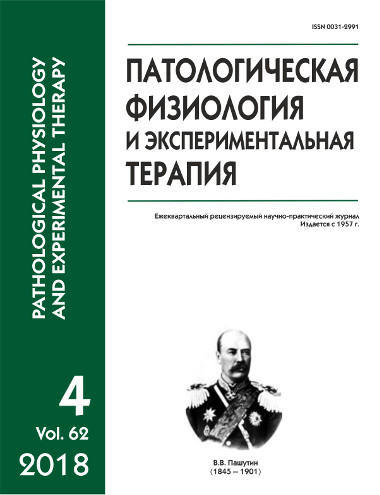The effect of prior administration of oral dipyridamole on cerebral blood flow and blood pressure of SD rats during global cerebral ischemia
Keywords:
stroke, dipyridamole, kurantil, rat, global ischemia
Abstract
The study focused on the effect of dipyridamole (kurantil) administered for 3 days prior to a surgery on blood pressure (BP) and cerebral blood flow during global cerebral ischemia followed by reperfusion in SD rats. Global ischemia was modeled by bilateral occlusion of carotid arteries with simultaneous withdrawal of 30% of the circulating blood volume (CBV). BP and blood flow were recorded throughout the operation. Results. During the experiment, time-related BP changes did not differ between the kurantil group and the vehicle group. The drop of cerebral blood flow in response to carotid artery occlusion was statistically non-significant in the kurantil group in contrast to the vehicle group (intergroup difference approximately 10%). After initiating hypovolemia by blood withdrawal, the drop of blood flow also tended to a 10% difference between the kurantil group and the vehicle group. In reperfusion, the difference in blood flow before and after reperfusion was statistically significant in the vehicle group (p = 0.001). In the kurantil group, the difference between the blood flow during occlusion and reperfusion was also statistically significant but less pronounced than in the vehicle group (p = 0.040), i.e., the cerebral blood flow fluctuations induced by critical conditions, such as occlusion, hypovolemia, and reperfusion, were more pronounced in the vehicle group. Therefore, kurantil stabilized the cerebral blood flow to some extent. These kurantil effects should be considered protective (neuroprotective) since the greatest damage of brain tissue is caused by sharp fluctuations of cerebral blood flow during acute vascular accidents. The kurantil-induced stabilization of cerebral blood flow suggests perspectives in using this drug for correction of brain ischemic conditions.Downloads
Download data is not yet available.
Published
21-11-2018
How to Cite
Ismailova A. M., Tuchowskaya E. A., Lobanov A. V., Shaikhutdinova E. R., Murashev A. N. The effect of prior administration of oral dipyridamole on cerebral blood flow and blood pressure of SD rats during global cerebral ischemia // Patologicheskaya Fiziologiya i Eksperimental’naya Terapiya (Pathological physiology and experimental therapy). 2018. VOL. 62. № 4. PP. 241–245.
Issue
Section
Brief Reports






